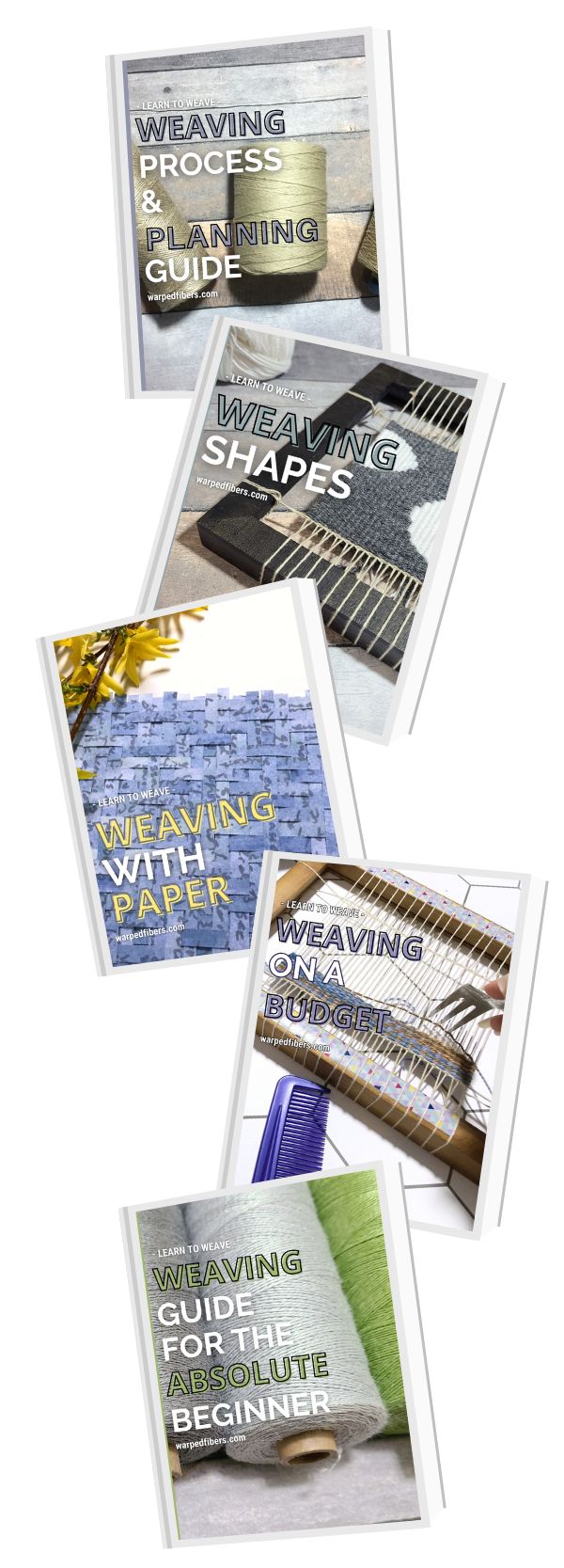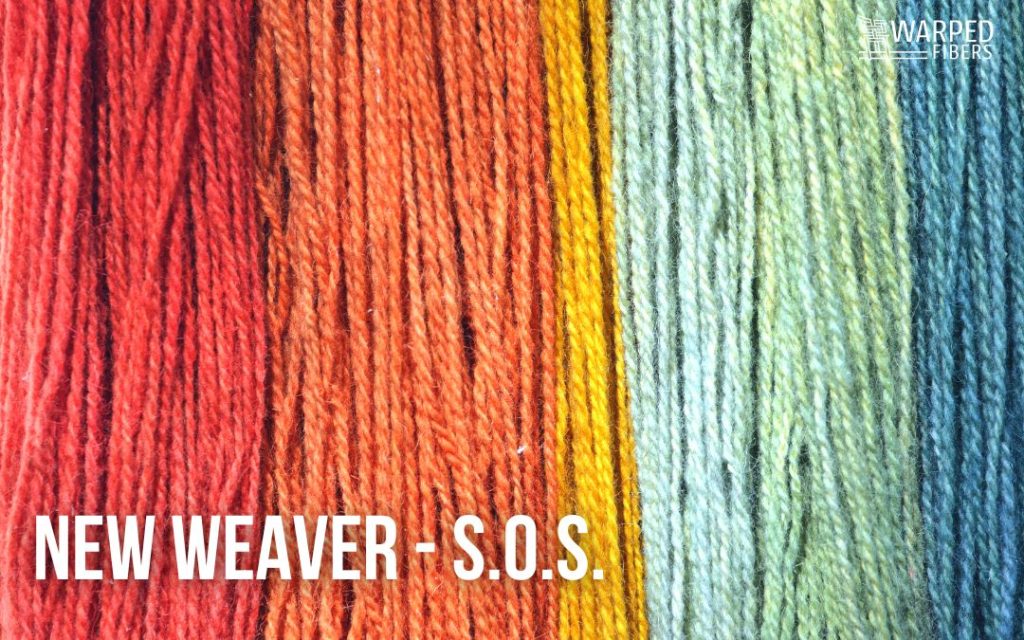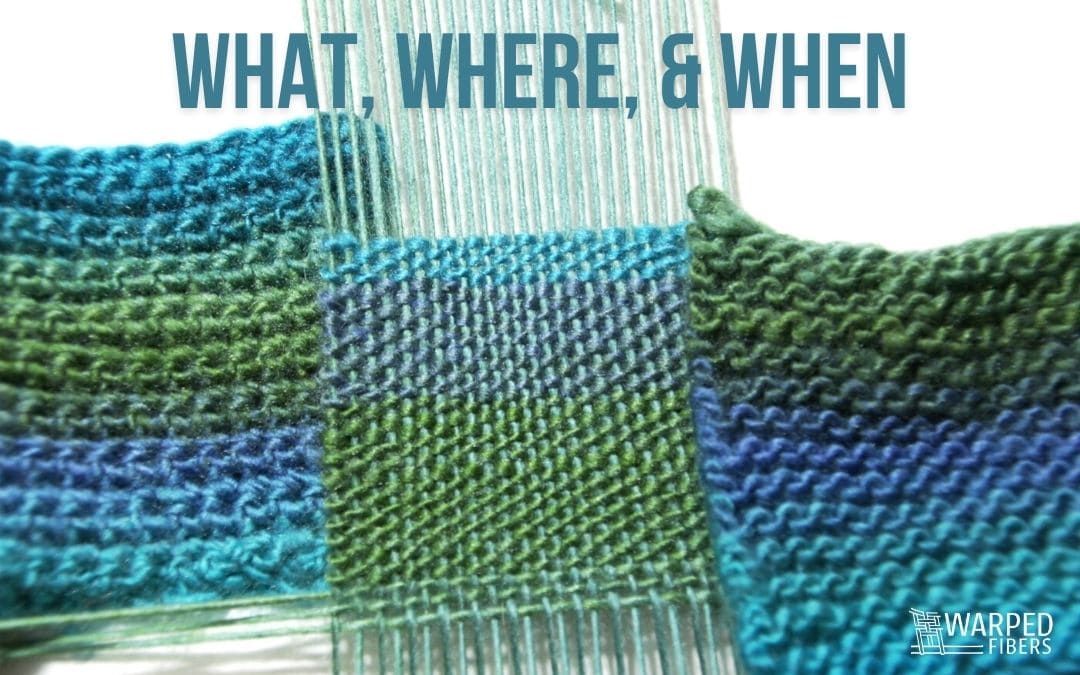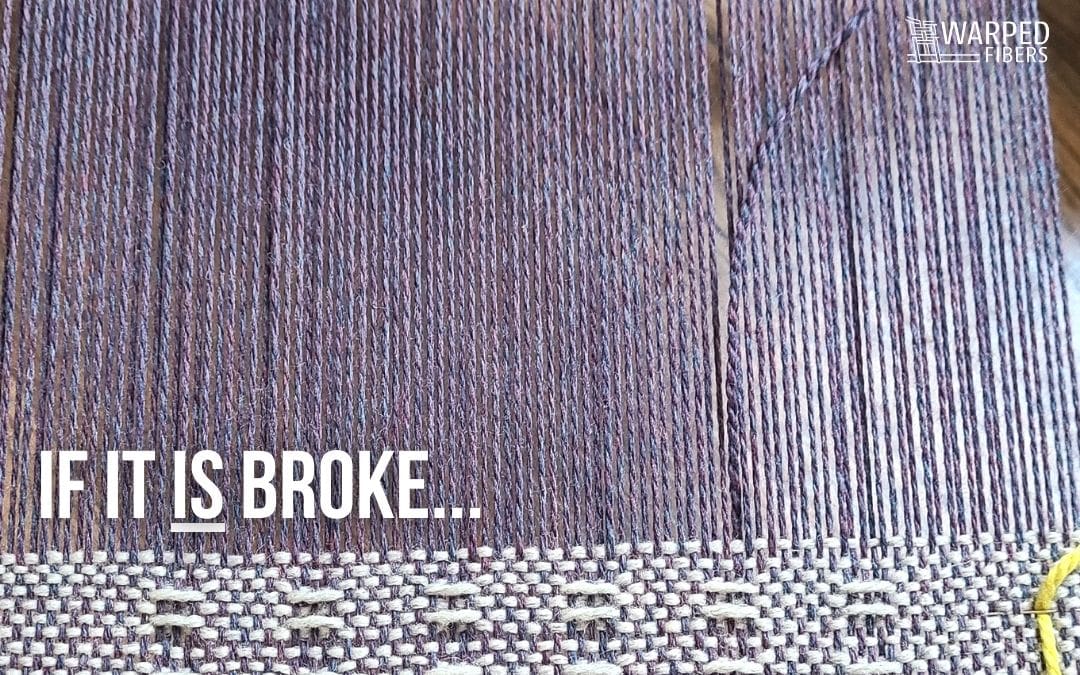Have you ever wanted to set up your floor loom for a weaving, but you were unsure of how to read the instructions?
Weaving drafts are directions for how to set up your loom and how to weave your desired pattern. This can apply to patterns that are created through the use of color and plain weave and those created with multiple harnesses and treadles.
There are 3 sections in a weaving draft that explain both how to set up your loom and how to weave the pattern and 1 section that gives you a glimpse into what you can create.
This post may contain affiliate links. If you purchase something through these links then I will receive a small commission that helps keep the blog going – at no extra cost to you! Please read our DISCLAIMER for more info. Thanks for the support!
The 4 Sections of a Weaving Draft
Threading
Tie-Up
Treadling
Draw-down
Threading
Your threading pattern is found along the top of the draft and tells you the order of the harnesses you should be passing your warp through. The harnesses are one of the two parts of the loom that determines what warps are raised and when.
The two most common threading patterns are a straight draft or a point draft. Regardless of the type of draft – they are read from right to left. Some drafts will include arrows that will tell you when to repeat the pattern. This is especially true if it is complicated.
Straight drafts follow a pattern of 1, 2, 3, 4, 1, 2, 3, 4 repeat and correspond to their respective harnesses. Harness 1 being closest to the front and harness 4 being towards the back. (You can see the harnesses numbered in the graphic at the beginning of the post). The weaving drafts featured in this post are both straight drafts. The beginning graphic is plain weave and the images are for twill.
Learn about the 3 basic weave structures here.
Point drafts, on the other hand, may follow a pattern similar to 1, 2, 3, 4, 3, 2, 1 repeat.
You can have any combination or variation of harnesses depending on the pattern you are going for.
It is VERY important that when you are threading your heddles you ALWAYS double-check as you go! If you make a mistake you will either have to undo what you did or create a new heddle(s) out of string to fix the pattern. It is better to know sooner rather than later!
Learn more about string heddles and repair heddles for fixing threading mistakes here!
If you are working with a floor loom that has more or less than 4 harnesses then you can find weaving drafts that will work with all looms. There have been plenty of books published that are solely devoted to weaving drafts. You can also find a lot of free drafts on PINTEREST.
I have a board devoted to them and I recommend you do too!
Tie-Up
The tie-up refers to which treadles on your floor loom get attached to which harnesses and is found in the top corner of the draft.
Think of the treadles as the foot pedals on the bottom of your loom. When you step on one it raises whatever harness it is currently attached to. Each vertical column relates to a treadle and each horizontal column relates to a harness.
Imagine each horizontal column as its own treadle. In the example above that would mean that you would tie up treadle 1 to harnesses 1 and 2. Treadle 2 would be attached to harnesses 2 and 3 etc.
Rising or Sinking Shed?
It is important to know what kind of shed your loom creates in order to accurately tie up your treadles.
Your loom will either have a rising or a sinking shed (does the shed come up or go down from the resting position?) If you are using a book of drafts then it should tell you what kind of shed the tie-up is for.
If your loom is a rising shed and the draft is written for a sinking shed, then you will need to tie up the opposite harnesses. For example, if your tie-up denotes harnesses 1 and 4, you will instead tie up 2 and 3. Do not worry if you are unsure! It is not the end of the world if you do not switch the tie-up pattern. You may just be weaving your piece upside down! It will be correct when you take it off and flip it over.
If you have enough treadles (and your loom lets you), I recommend tying up every other treadle to give you a little bit of space to work with. If you only need a few treadles – think about how you like to weave. Do you only treadle with your right foot? Skew your tie-ups to the right. Left-footed?
You get the idea.
Treadling
The order in which you step on your treadles to raise your harnesses is found along the right side of your draft. This portion of the draft is important for when you are finished setting up the loom and ready to weave!
When it comes to color patterns this part of the draft may be color coded or the colors may be assigned letters. If you are planning certain patterns like overshot then this part may have numbers located in each box which stands for the number of times you weave that same shot before moving on. This usually involves a line of plain weave between each shot. Your draft should tell you if that is the case.
I always write out my treadling pattern on a piece of paper and attach it to the castle (main part) of my loom. This allows me to have the pattern right in front of me instead of constantly looking down and into a book.
Doing this is both better for my neck and easier than trying to find a place to put a book while weaving!
Draw-Down
So what does all this work get you?
The actual pattern that you will be creating is located in the largest part of the weaving draft.
This is called the draw-down.
Depending on the source of the draft you will either see a graphic illustration of the pattern or you may get a photo of the finished piece. Some books will even include an image of the back of the weaving if it varies from the front.
If you are looking for a great pattern book then I highly recommend THE HANDWEAVER’S PATTERN DIRECTORY. It is full of over 600 different 4-shaft weaving drafts and includes full-color images. I have had mine since I was a student at VCU and still reach for it as my first pattern resource when planning a project.
Now that you know how to read a weaving draft – I want you to download my FREE pattern! Go HERE to get the details about this hand-manipulated lace scarf that is perfect for Spring!
⇣ Love It? Share it! ⇣
You May Also Like


























I have a one heddle RHL. This draft is for several heddles. Do you have any patterns for a Leno scarf for the RH loom?
Thanks
Hi Nora, Leno is a hand-manipulated lace so the dressing of your Rigid Heddle loom would be the same as dressing it for any other plain weave and would only need the 1 heddle. I don’t currently have any patterns for Leno, but my brooks bouquet pattern can be adapted for a rigid heddle loom since it is also plain weave with hand-manipulated lace. If you are interested in leno and other similar patterns on your rigid heddle then I recommend Inventive Weaving on a Little Loom by Syne Mitchell (I talk about it HERE and I have a full review coming soon)